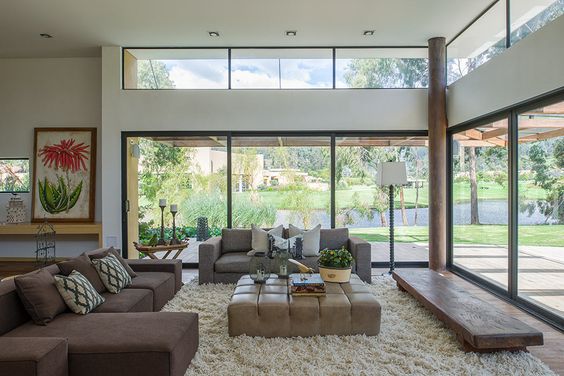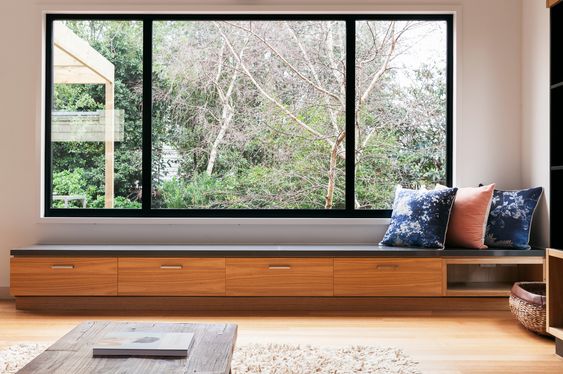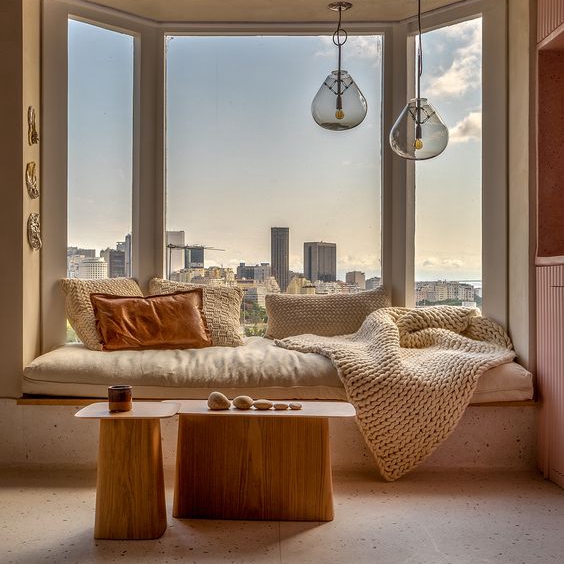Different Types of Windows That Increase Energy Efficiency

When it comes to windows, there are many factors to consider, such as design, energy efficiency, and functionality. There are so many types of energy-efficient windows that it can be hard to know which one to choose.
By properly understanding and choosing energy-efficient options, you can not only increase your home's beauty, but you can also increase its value, save money on energy bills, and not have to worry about replacing your windows again for a decade or more. Once you find the right windows, they can provide significant cost savings over the years. There are many types of energy-efficient windows that can save you money on your monthly energy bill. By choosing the right windows, you can seal in your home's air conditioning to keep your place cool and comfortable.
Fixed window
Fixed picture windows provide no functionality. But in terms of energy efficiency, this is actually a good thing! Since you can't open the picture window, you can never break its seal. No other window style can do this.
Floor-to-ceiling windows are more energy efficient than sash or any other style of windows. This is due to their permanent sealing and exclusion of removable parts. The lack of ventilation from fixed windows limits the cold from creeping in during the colder months. Picture windows are designed to be more energy efficient, but can be made even more energy efficient using multi-glazed units and Low-E coatings; the same goes for sash windows and other window styles.
Hinged window
Hinged windows are designed for ventilation. Turn a crank or push with your hand, and they pivot outward on their hinges. This design has one major advantage over windows that slide open and closed: lower rates of air leakage. When closed, the single sash of a hinged window presses firmly against the sash. Sliding, double-hung, and single-hung windows, on the other hand, have two sash windows that overlap slightly.

Awning windows, casement windows, and funnel windows are all types of casement windows. The only difference between them is the location of the hinges - top, side and bottom respectively. They can be used for strategic ventilation or paired with floor-to-ceiling windows to add some functionality to your window combination.
Generally speaking, casement windows are designed for ventilation. These windows pivot outward on their hinges by pushing or twisting a crank by hand. Their design reduces air leakage compared to windows that slide open. The single sash of a hinged window presses against the sash when the window is closed. In comparison, single-hung and double-hung windows have a slight overlap in the two sash frames.
ENERGY STAR Windows
While every window is clearly labeled with an energy performance rating based on National Window and Door Rating Council (NFRC) testing, only the most energy-efficient windows earn Energy Star’s coveted blue label.
ENERGY STAR windows are government certified with performance ratings similar to the NFRC. So if you see the Energy Star logo, you know it has a higher efficiency window than it would without Energy Star. But be warned: Energy Star certification is based on climate and geography, so windows rated higher in southwestern sunlight may not perform as well in colder areas of the northeast.
Bay and bow windows
Bay windows have an outward-facing frame, usually hexagonal, that increases the space of a room. Bow windows are a variation of bay windows. The only difference is that instead of being hexagonal and straight-sided, bow windows are curved, forming an arch. This type of window is usually larger than a bay window due to the curved edges.
Bay and bow windows look great, but they are also very functional. The extra space is perfect for plant racks, bookshelves, or even a small breakfast nook. And because they bring in a lot of natural light, they can help you save on energy costs during the day.
double hung windows
The double-hung window type is the most common type of window in American homes due to its practicality and functionality. Double hung windows are energy efficient. These windows have two panes of glass that are perfectly installed so that air can flow in and out of the window easily.
This type of window has two operable parts that slide up and down and can be opened and closed. The upper sash and lower sash are the two main parts that can be opened and closed. They can all be opened to allow air circulation.
You can open the double-hung windows to let in fresh air. They have two belts that can be opened. The lower window frame lifts up, allowing you to feel the cool air outside. The upper sash brings hot air from the ceiling out the window.

Thermal windows
Single panes of glass have been the standard for windows for centuries. Then, in the 20th century, something innovative happened. Manufacturers found that adding another pane of glass provided additional insulation. In terms of NFRC energy efficiency, it reduces U-factor and Solar Heat Gain Coefficient (SGHC).
Today, insulated windows are more than just extra panes of glass. Each window pane is also separated by an insulating gas. So triple-pane windows actually provide a total of five layers of insulation—two more than double-pane windows and four more than single-pane windows—helping you increase the energy efficiency of your windows.
Low-E windows
What's on the outside of the windowpane is also important. Low-E coatings on glass, often called Low-E glass, help improve thermal performance. Low-E glass helps block UV and infrared rays but allows visible light to enter.
Infrared light is associated with thermal energy. By blocking sunlight, Low-E windows help prevent the sun's heat from entering your home. The benefits of blocking out sunlight and heat in the summer are obvious, but Low-E glass also does the opposite. In cold temperatures, it actually reflects heat back into your home to help reduce heat loss and maintain efficiency.
Depending on where you live, you can choose from different types of Low-E window glass to suit your climate. Pella offers four different window glass options:
No matter where you live or what style you prefer, there are ways to make your windows more energy efficient. With the help of the Energy Star label and your local Pella representative, you can choose the best window type for your home and customize it to maximize your home's energy efficiency.